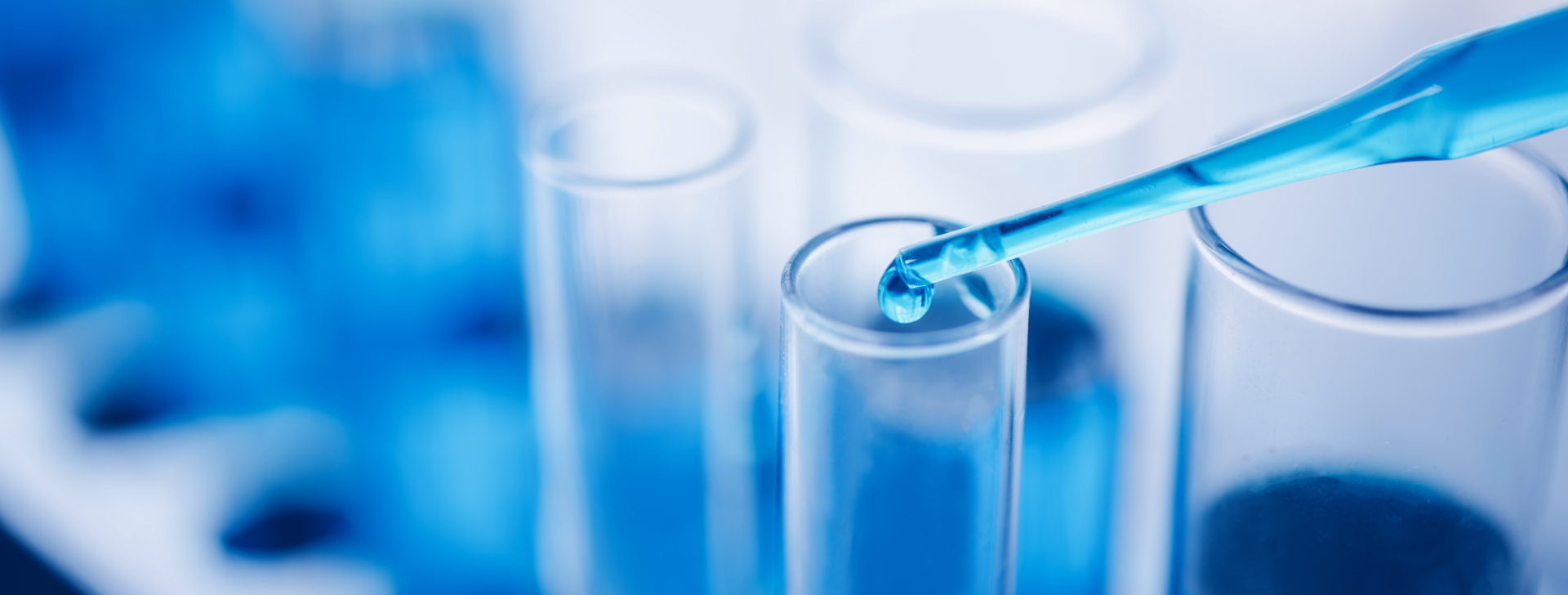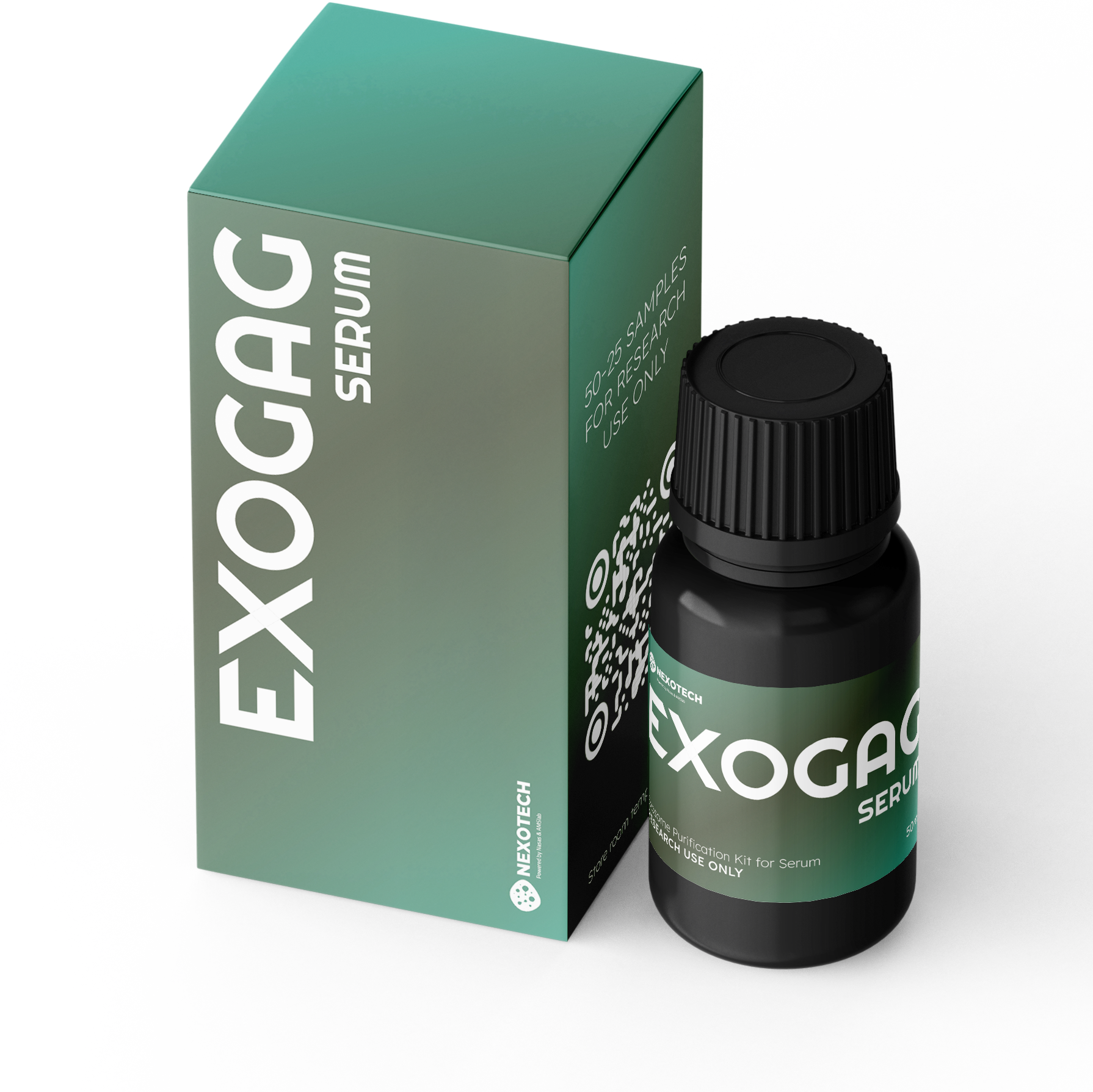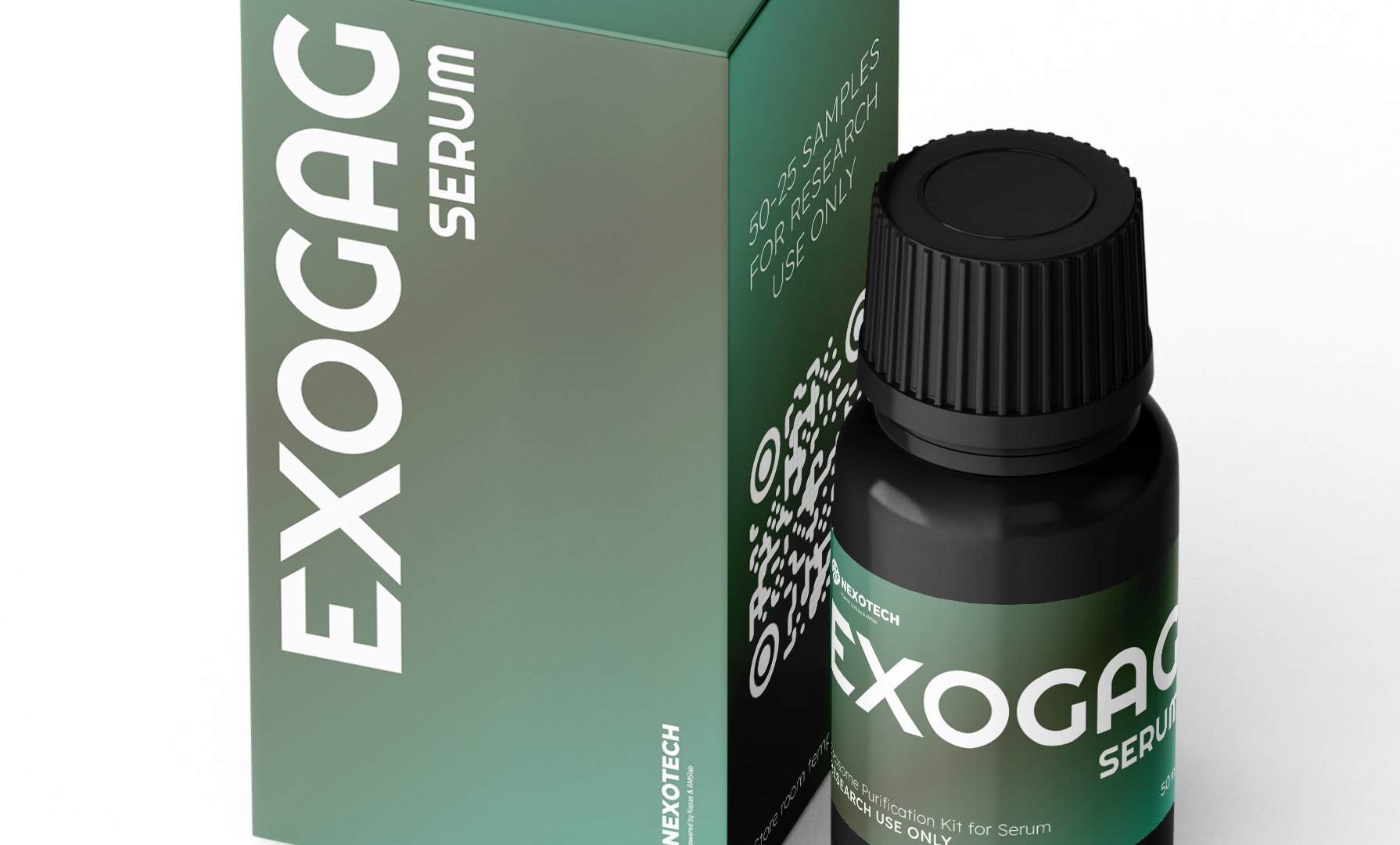

Serum is the liquid component of the blood after the blood is allowed to clot. Then by centrifugation the clot is removed and also the cellular fraction (erythrocytes, leukocytes and thrombocytes). Serum does not contain the coagulation cascade factors.
Serum is a source of proteins, cell-free nucleic acids, extracellular vesicles (among them exosomes) and metabolites. Indeed, it can host exosomes from any cellular type of the body in both physiological and pathological conditions. Given this, serum is one of the major sources of exosomes for clinical applications, since liquid biopsies represent a low-invasive procedure.
Exosomes isolate from serum represent a good surrogate for the identification of informative biomarkers for disease diagnosis, prognosis and longitudinal monitoring.
Efficient and optimized method for exosome isolation from human serum.
Additional Information
ExoGAG should be stored in darkness. And, prior to use, ExoGAG must be vortex.
Recommended Usage
We recommend to centrifuge the serum at 2.000g for 5 minutes and 4 °C to remove cells and cellular debris. And if additional debris remains detectable, supernatant should be centrifuged again for other 10 minutes. If serum is stored at -80 °C, it must be thawed and tempered on ice before centrifugation. Serum can be stored at 4 °C for 24h.
If you still have questions

